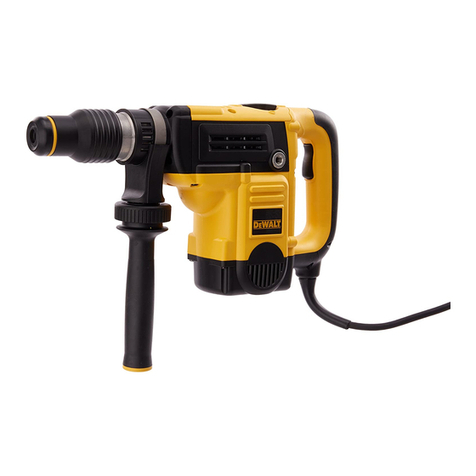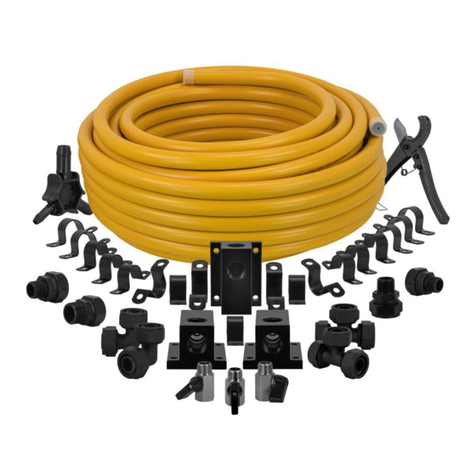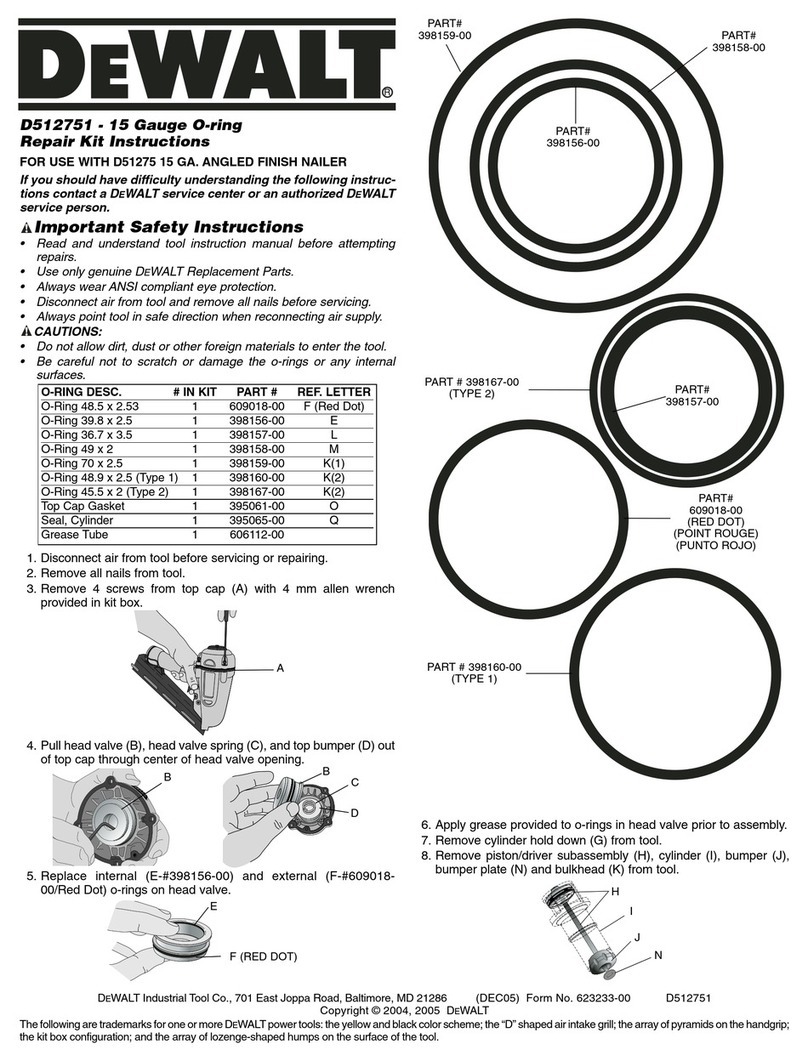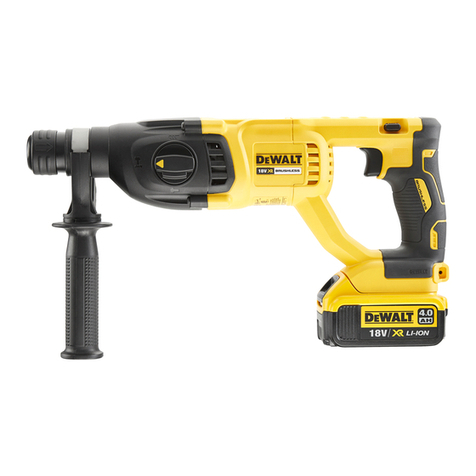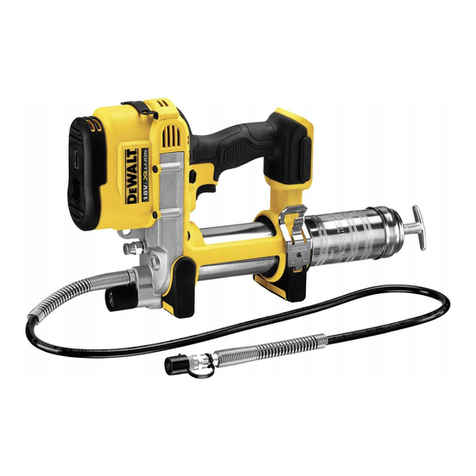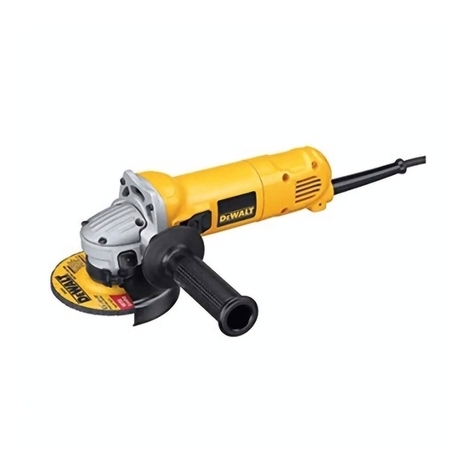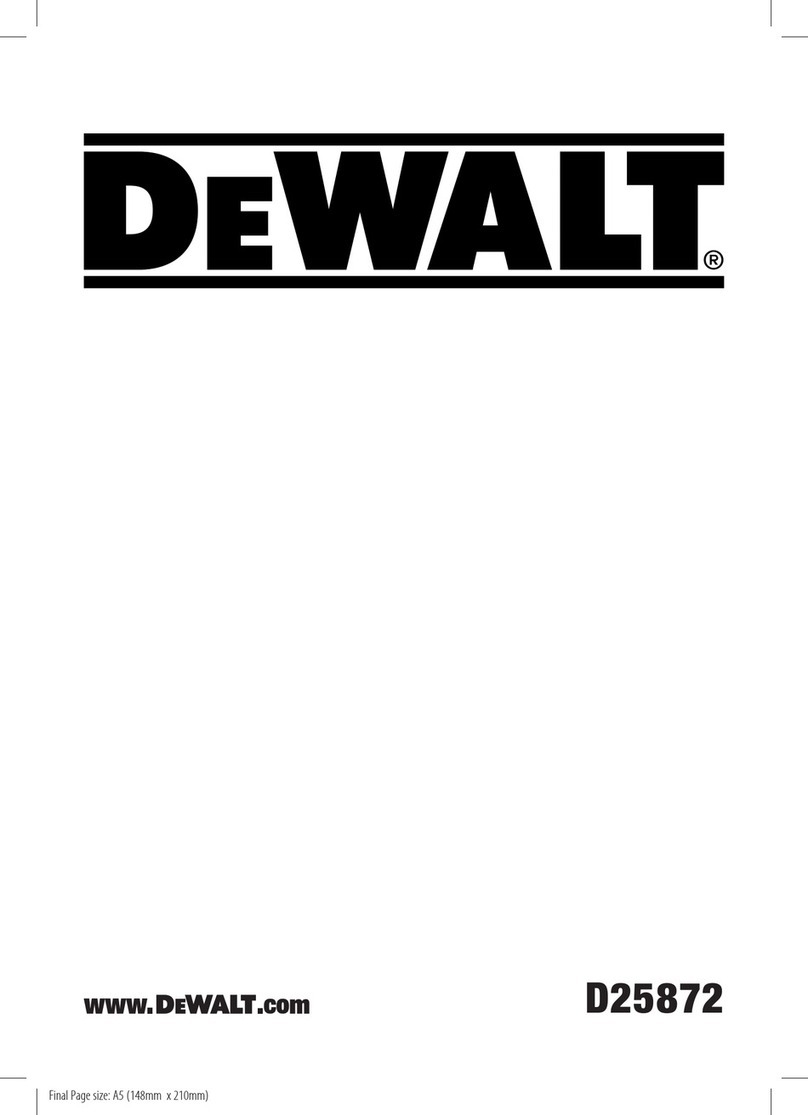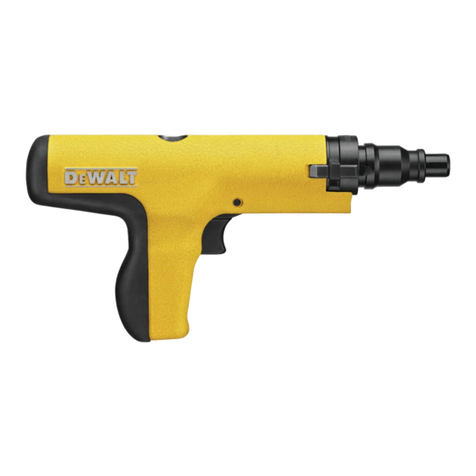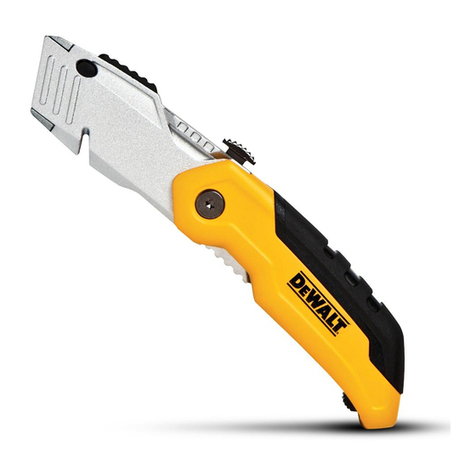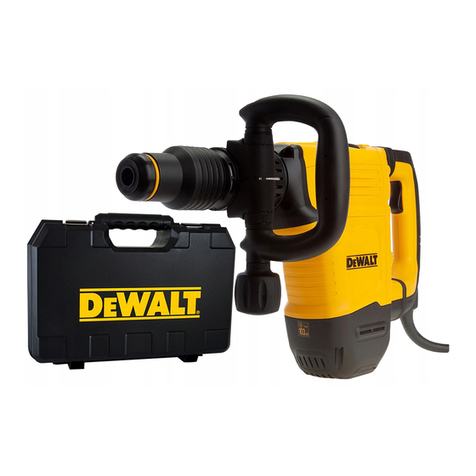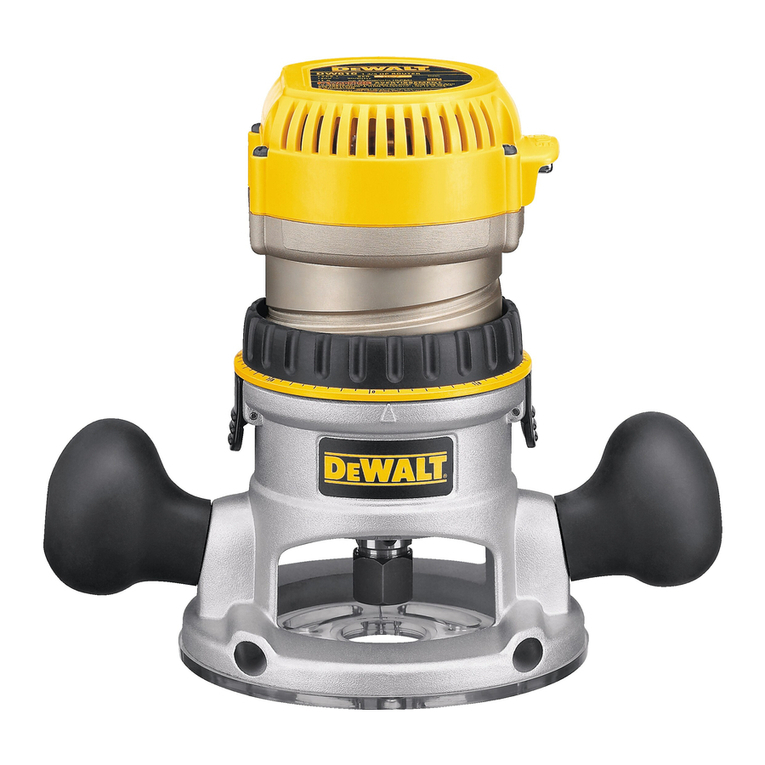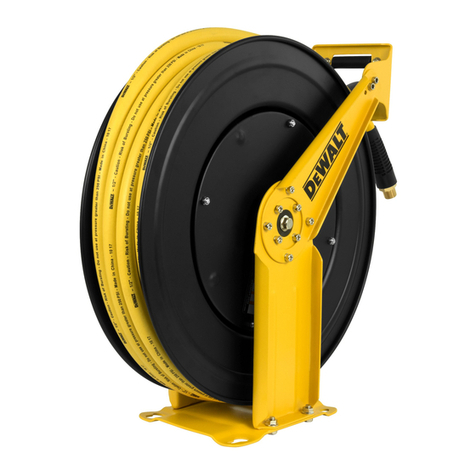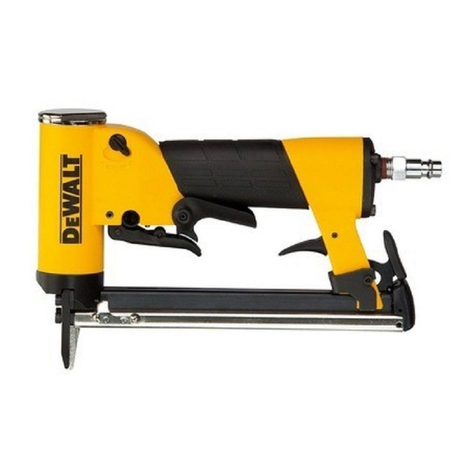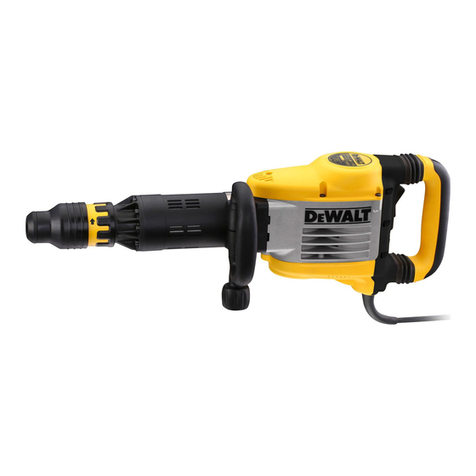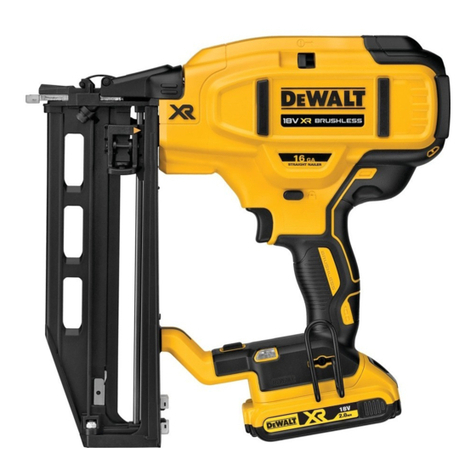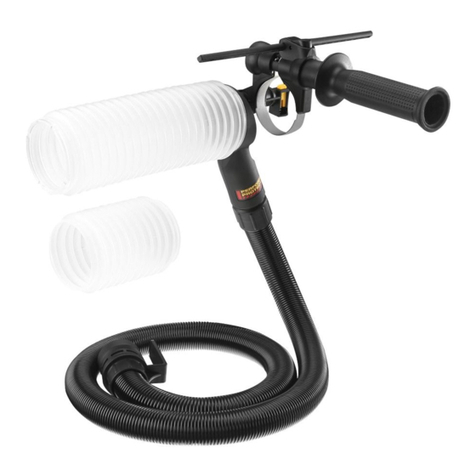
6
ENGLISH
Residual Risks
WARNING: We recommend the use of a residual current
device with a residual current rating of 30mA orless.
In spite of the application of the relevant safety regulations
and the implementation of safety devices, certain residual risks
cannot be avoided. These are:
• Impairment ofhearing.
• Risk of personal injury due to flyingparticles.
• Risk of burns due to accessories becoming hot
duringoperation.
• Risk of personal injury due to prolongeduse.
SAVE THESE INSTRUCTIONS
may contact hidden wiring or its own cord. Cutting
accessory contacting a “live” wire may make exposed metal
parts of the power tool “live” and could give the operator an
electricshock.
• Be certain that the material being operated on does not
conceal electric or gas service and that their locations
have been verified with the utilitycompanies.
• Keep a firm grip on the tool at all times. Do not attempt
to operate this tool without holding it with both hands.
Operating this tool with one hand will result in loss of control.
Breaking through or encountering hard materials such as
re‑bar may be hazardous as well. Tighten the side handle
securely beforeuse.
• Do not recondition accessories yourself. Chisel
reconditioning should be done by a qualified specialist.
Improperly reconditioned accessories could cause injury.
• Wear gloves when operating tool or changing bits.
Accessible metal parts on the tool and bits may get extremely
hot during operation. Small bits of broken material may
damage barehands.
• Never lay the tool down until the bit has come to a
complete stop. Moving bits could causeinjury.
• Do not strike jammed bits with a hammer to dislodge
them. Fragments of metal or material chips could dislodge
and causeinjury.
• Ensure the chisel is secured in place before operating
thetool.
• In cold‑weather conditions or when the tool has not
been used for a longer period of time, let the tool run
with no load for several minutes beforeuse.
• When working above ground level ensure the area
below isclear.
• Do not touch the chisel or the parts close to the chisel
immediately after operation, as they may be extremely
hot and cause burns to theskin.
• Always direct the power cable to the rear, away from
thechisel.
• Do not operate this tool for long periods of time.
Vibration caused by hammer action may be harmful to your
hands and arms. Use gloves to provide extra cushion and limit
exposure by taking frequent restperiods.
Additional Safety Instructions for Breakers
• Wear ear protectors. Exposure to noise can cause
hearingloss.
• Use auxiliary handles supplied with the tool. Loss of
control can cause personalinjury.
• Hold power tool by insulated gripping surfaces when
performing an operation where the cutting accessory
g ) If devices are provided for the connection of dust
extraction and collection facilities, ensure these are
connected and properly used. Use of dust collection
can reduce dust‑relatedhazards.
h ) Do not let familiarity gained from frequent use of
tools allow you to become complacent and ignore
tool safety principles. A careless action can cause severe
injury within a fraction of asecond.
4) Power Tool Use and Care
a ) Do not force the power tool. Use the correct power
tool for your application. The correct power tool
will do the job better and safer at the rate for which it
wasdesigned.
b ) Do not use the power tool if the switch does not turn
it on and off. Any power tool that cannot be controlled
with the switch is dangerous and must berepaired.
c ) Disconnect the plug from the power source and/
or remove the battery pack, if detachable, from
the power tool before making any adjustments,
changing accessories, or storing power tools. Such
preventive safety measures reduce the risk of starting the
power toolaccidentally.
d ) Store idle power tools out of the reach of children
and do not allow persons unfamiliar with the power
tool or these instructions to operate the power tool.
Power tools are dangerous in the hands of untrainedusers.
e ) Maintain power tools and accessories. Check for
misalignment or binding of moving parts, breakage
of parts and any other condition that may affect the
power tool’s operation. If damaged, have the power
tool repaired before use. Many accidents are caused by
poorly maintained powertools.
f ) Keep cutting tools sharp and clean. Properly
maintained cutting tools with sharp cutting edges are less
likely to bind and are easier tocontrol.
g ) Use the power tool, accessories and tool bits, etc.
in accordance with these instructions, taking into
account the working conditions and the work to be
performed. Use of the power tool for operations different
from those intended could result in a hazardoussituation.
h ) Keep handles and grasping surfaces dry, clean and
free from oil and grease. Slippery handles and grasping
surfaces do not allow for safe handling and control of the
tool in unexpectedsituations.
5) Service
a ) Have your power tool serviced by a qualified repair
person using only identical replacement parts. This
will ensure that the safety of the power tool ismaintained.
